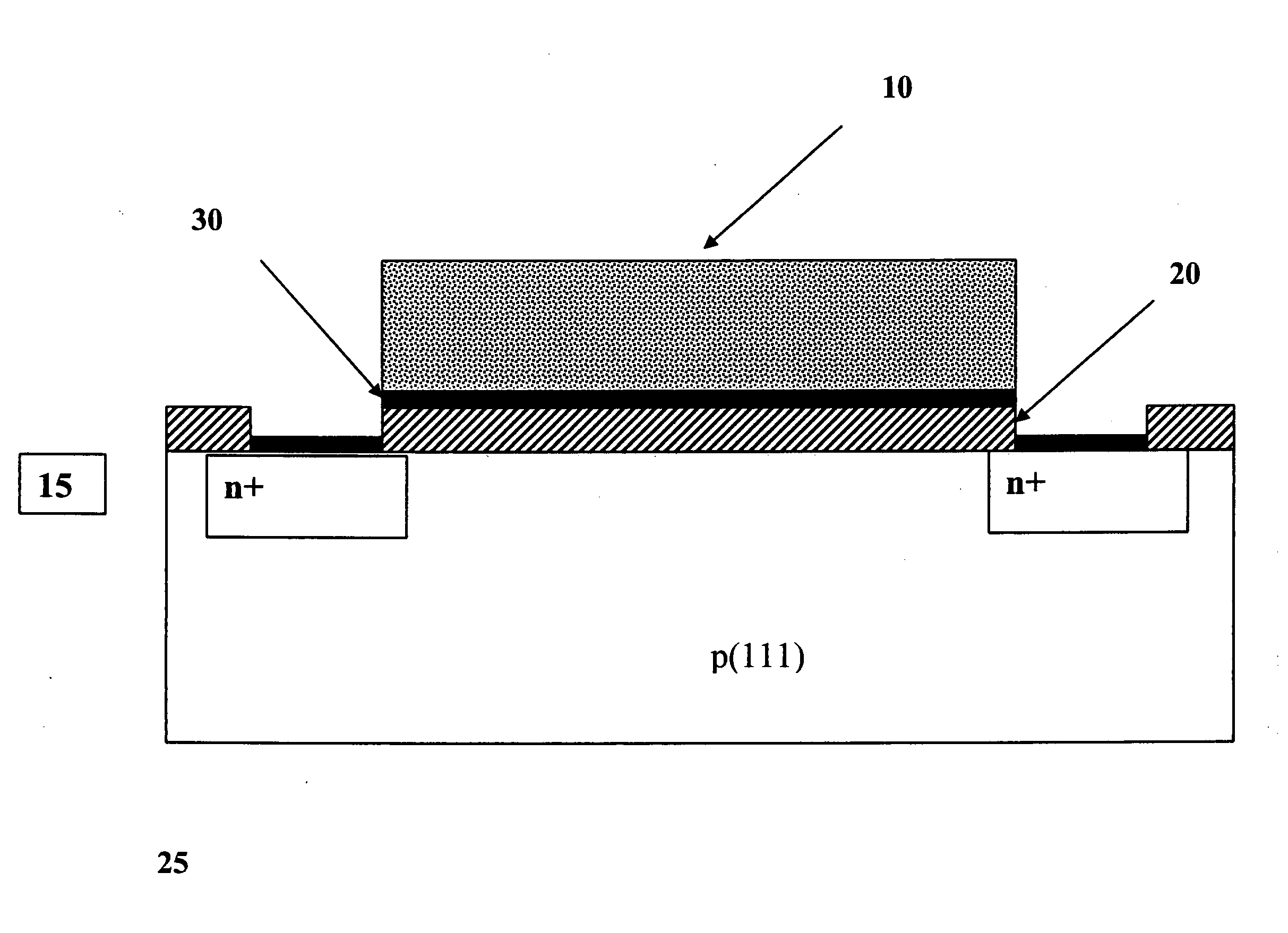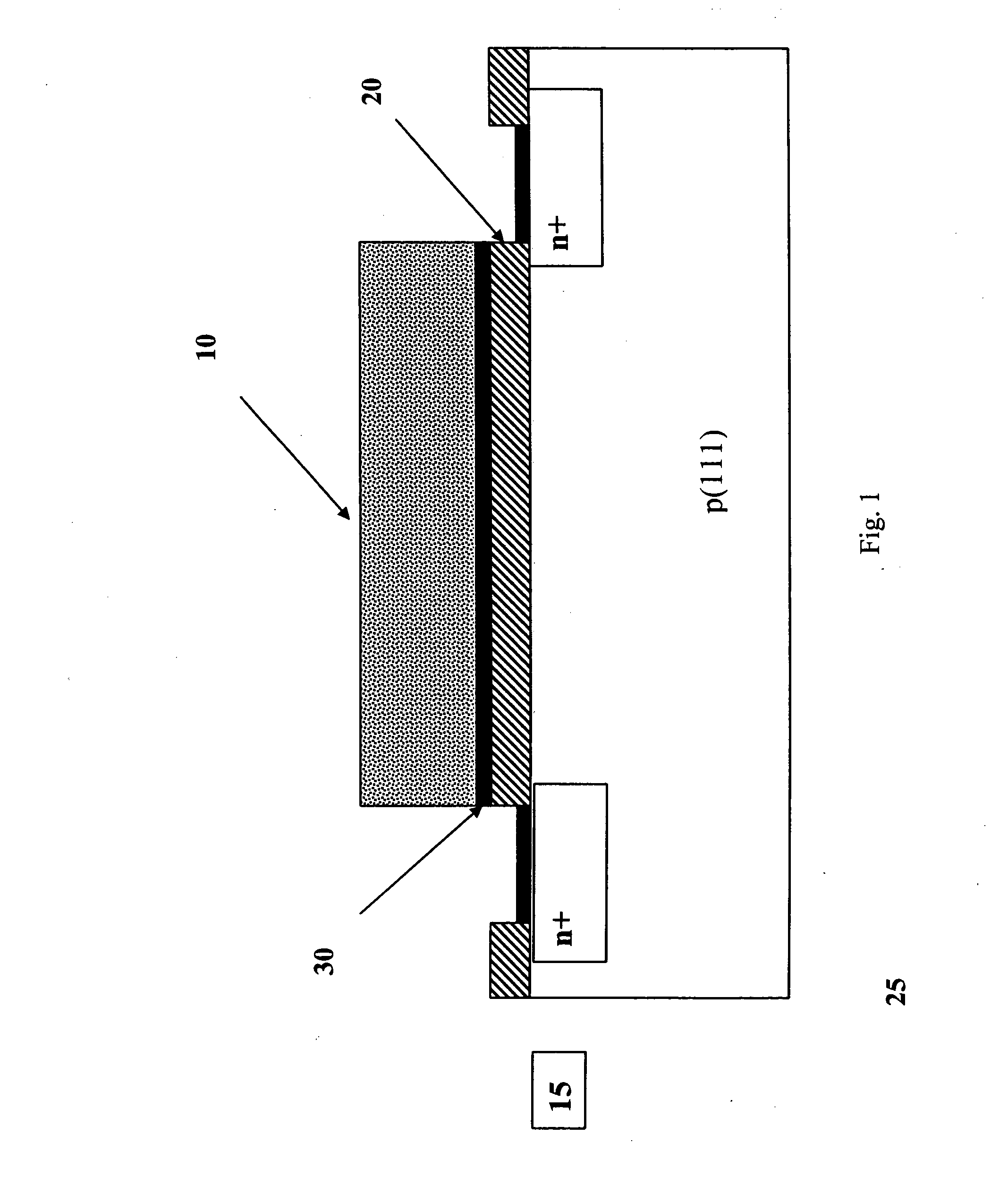Deposition of layers of porous materials, layers thus obtained and devices containing them
- Summary
- Abstract
- Description
- Claims
- Application Information
AI Technical Summary
Benefits of technology
Problems solved by technology
Method used
Image
Examples
Embodiment Construction
[0024]The deposition method according to the invention makes it possible to produce an authentic zeolite-based cover or coating, directly deposited on the support without the use of interposed adhesive layers or adhesion primers, so as to constitute the intermediary between the substance or substances to be detected and the underlying detection device. In practice, the coating according to the invention exploits the intrinsic characteristics of the zeolites and permits the absorption and release of substances also of a biological nature, e.g. enzymes and proteins, (Lee, G. S. et al.: Self-assembly of β-glucosidase and D-glucose-tethering zeolite crystals into fibrous aggregates, J. Am. Chem. Soc. 2000, 122, 12151-12157. Um, S. H. et al.: Self-assembly of avidin and D-biotin-tethering zeolite microcrystals into fibrous aggregates, Langmuir 2002, 18, 4455-4459. Poletto, M. et al.: Hydrolysis of lactose in a fluidized bed of zeolite pellets supporting adsorbed β-galactosidase, I. J. Ch...
PUM
| Property | Measurement | Unit |
|---|---|---|
| Temperature | aaaaa | aaaaa |
| Temperature | aaaaa | aaaaa |
| Temperature | aaaaa | aaaaa |
Abstract
Description
Claims
Application Information
 Login to View More
Login to View More - R&D
- Intellectual Property
- Life Sciences
- Materials
- Tech Scout
- Unparalleled Data Quality
- Higher Quality Content
- 60% Fewer Hallucinations
Browse by: Latest US Patents, China's latest patents, Technical Efficacy Thesaurus, Application Domain, Technology Topic, Popular Technical Reports.
© 2025 PatSnap. All rights reserved.Legal|Privacy policy|Modern Slavery Act Transparency Statement|Sitemap|About US| Contact US: help@patsnap.com


